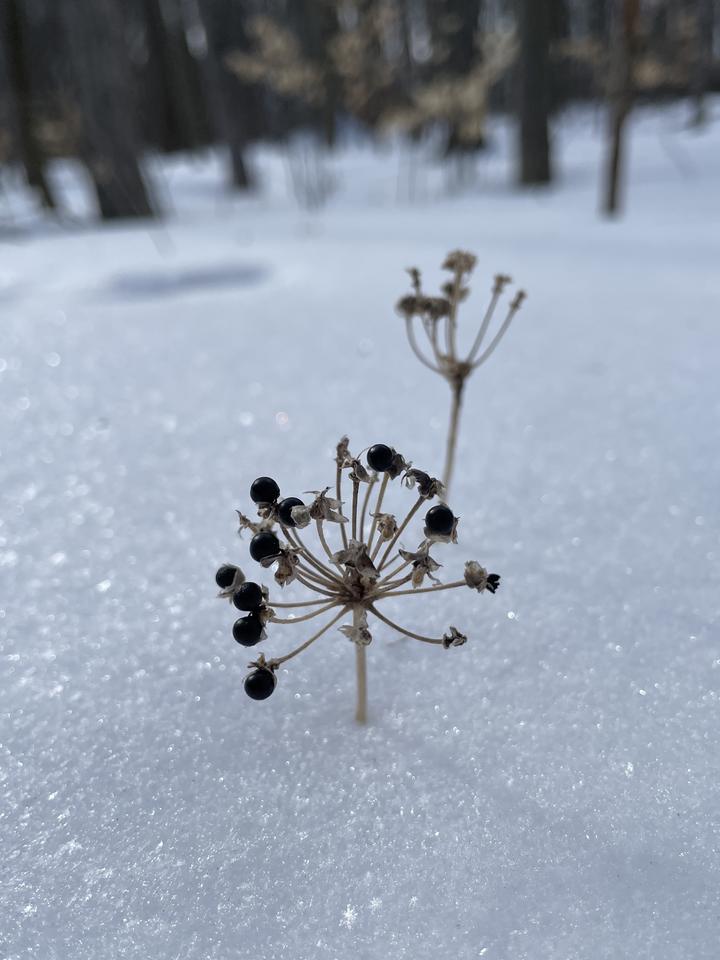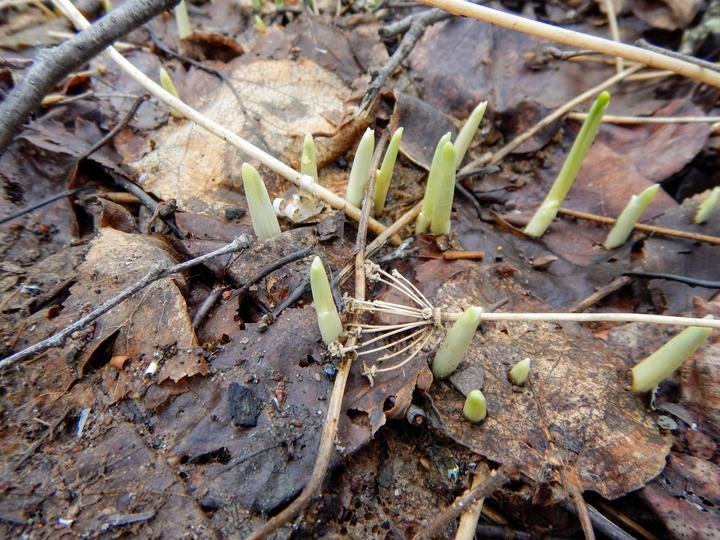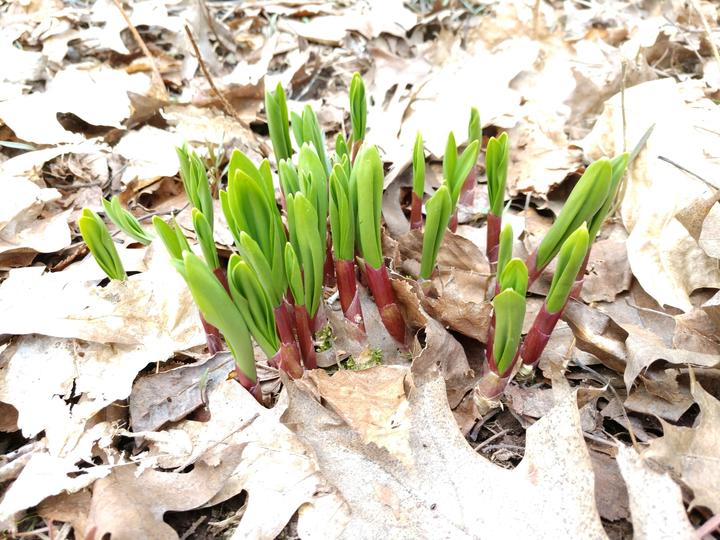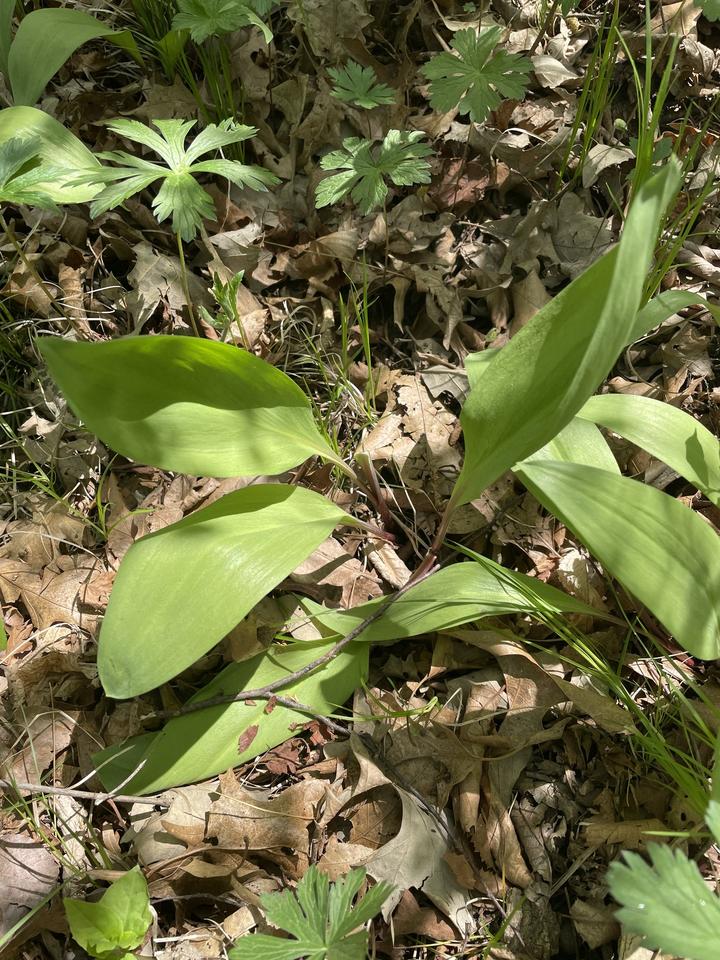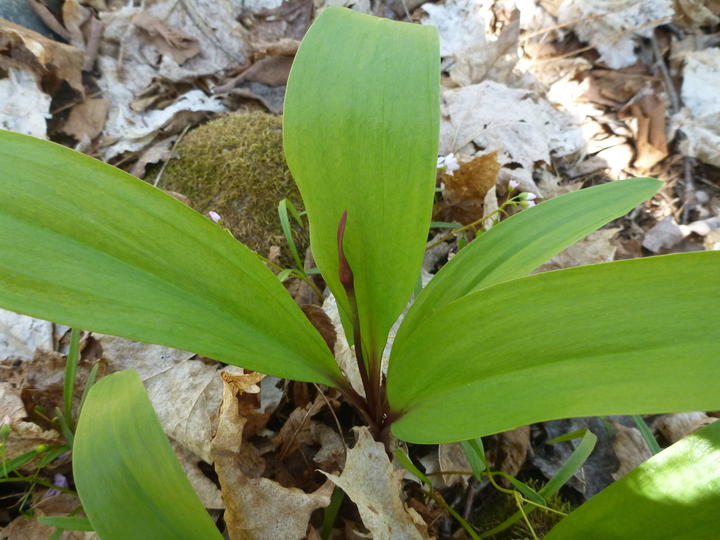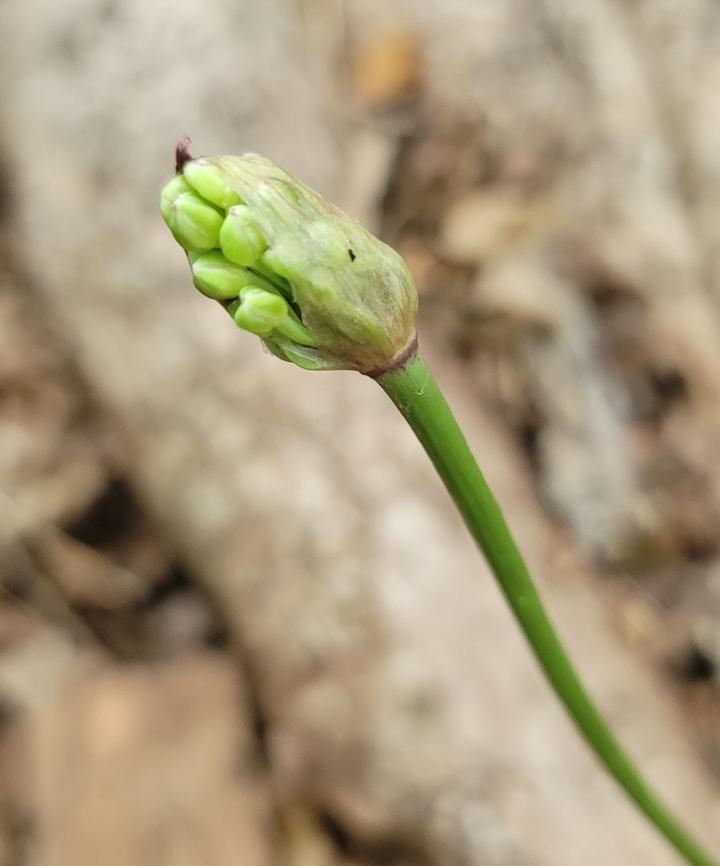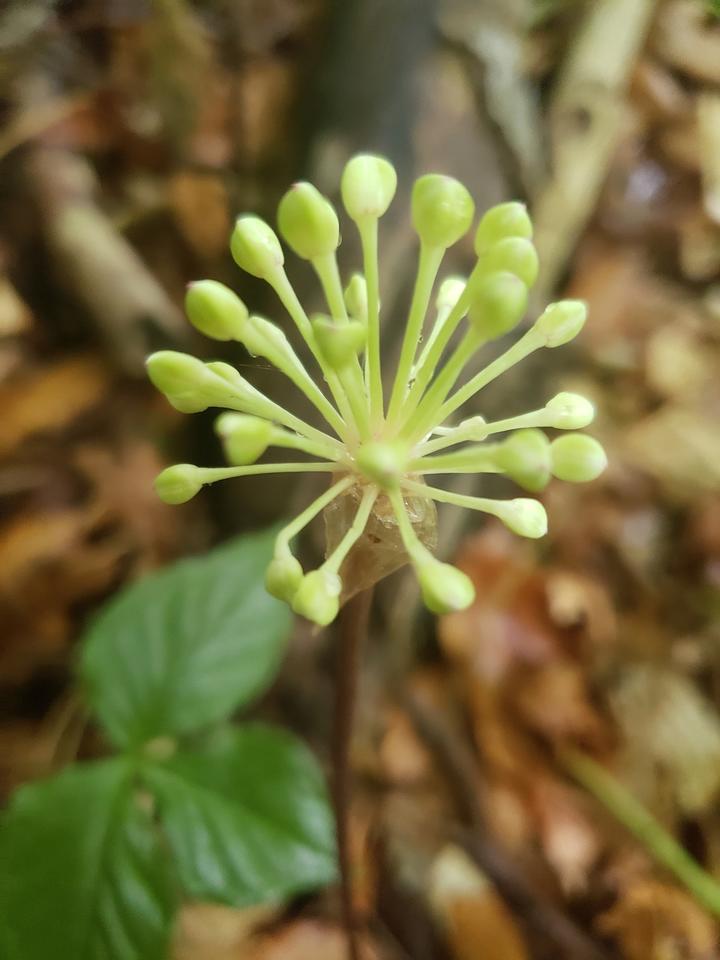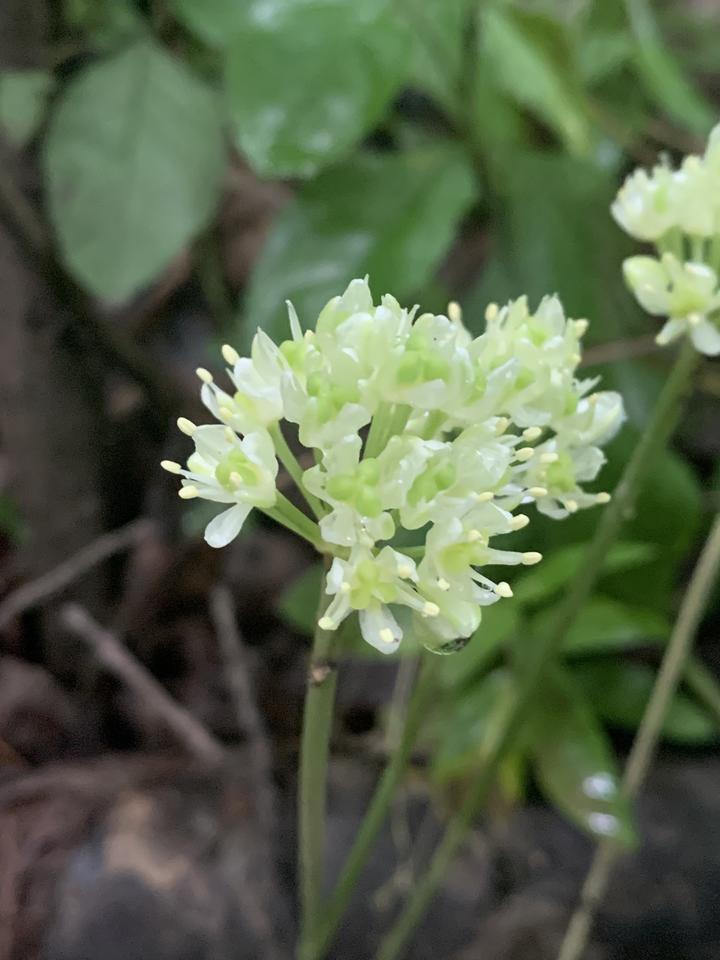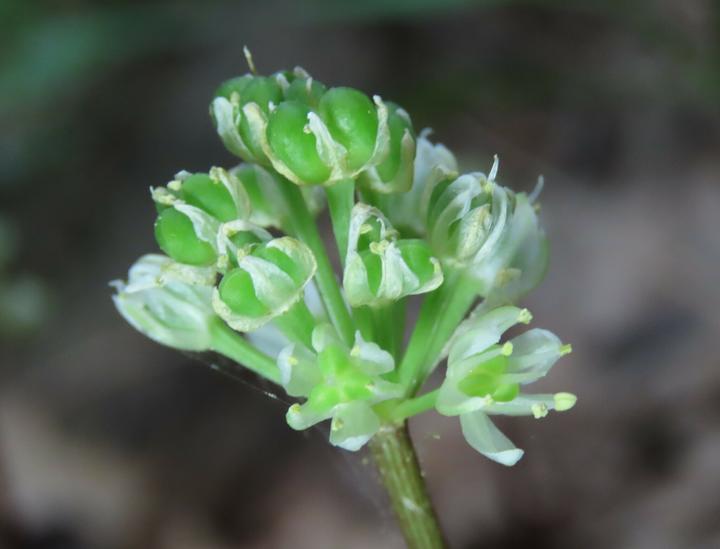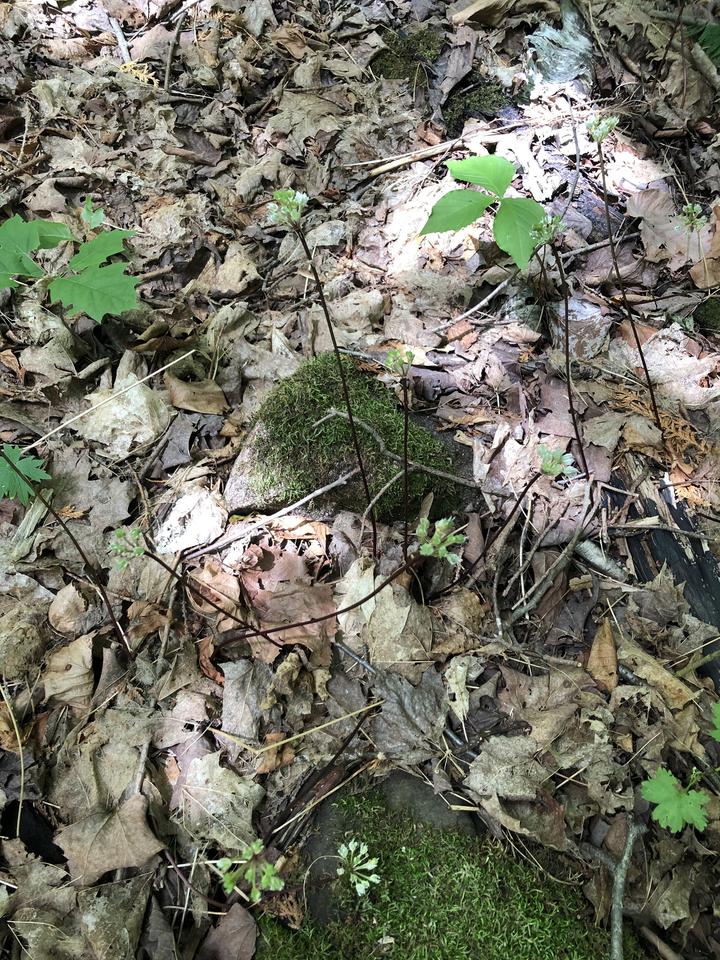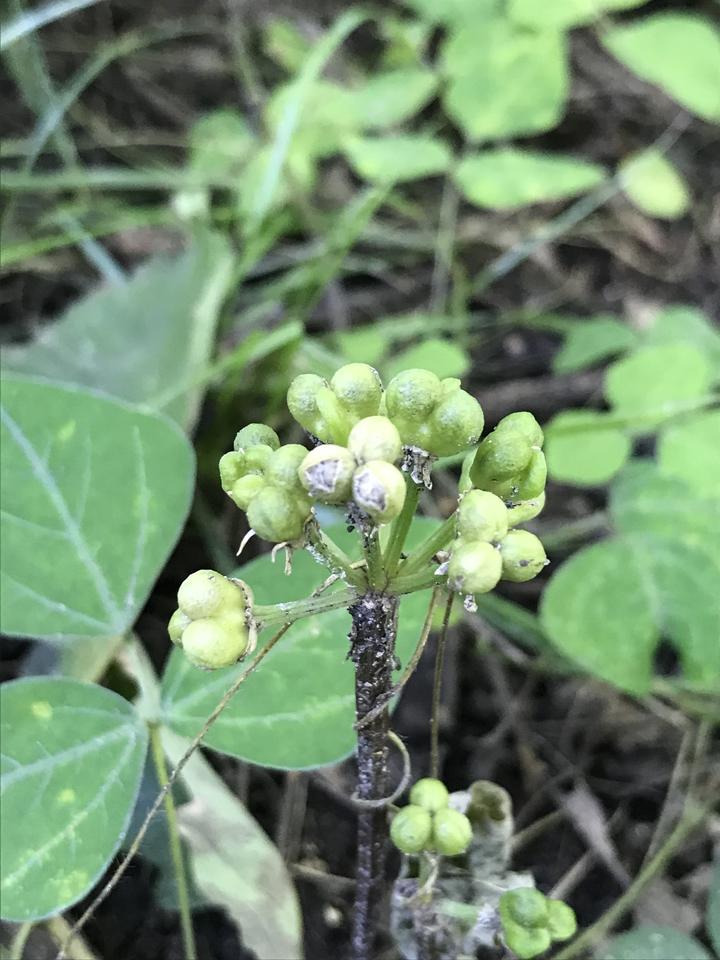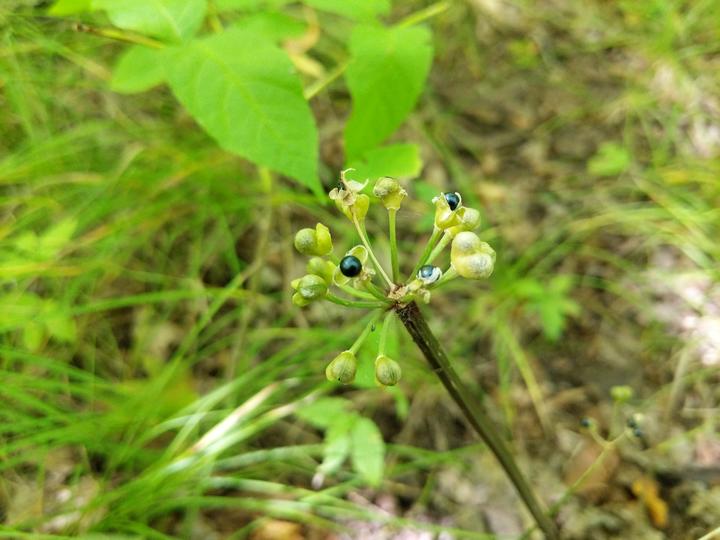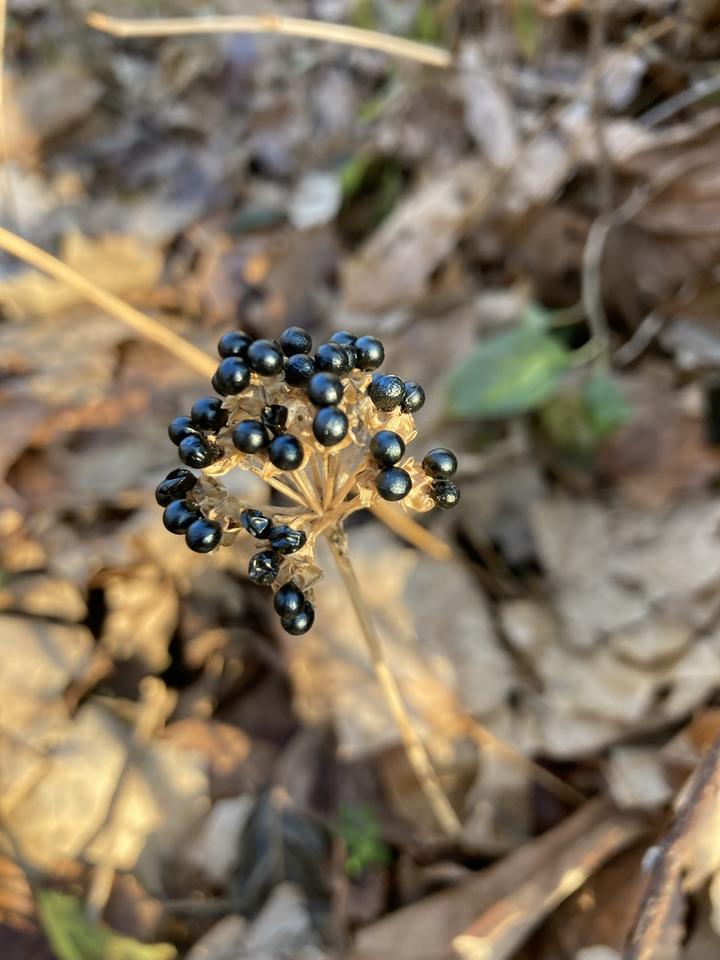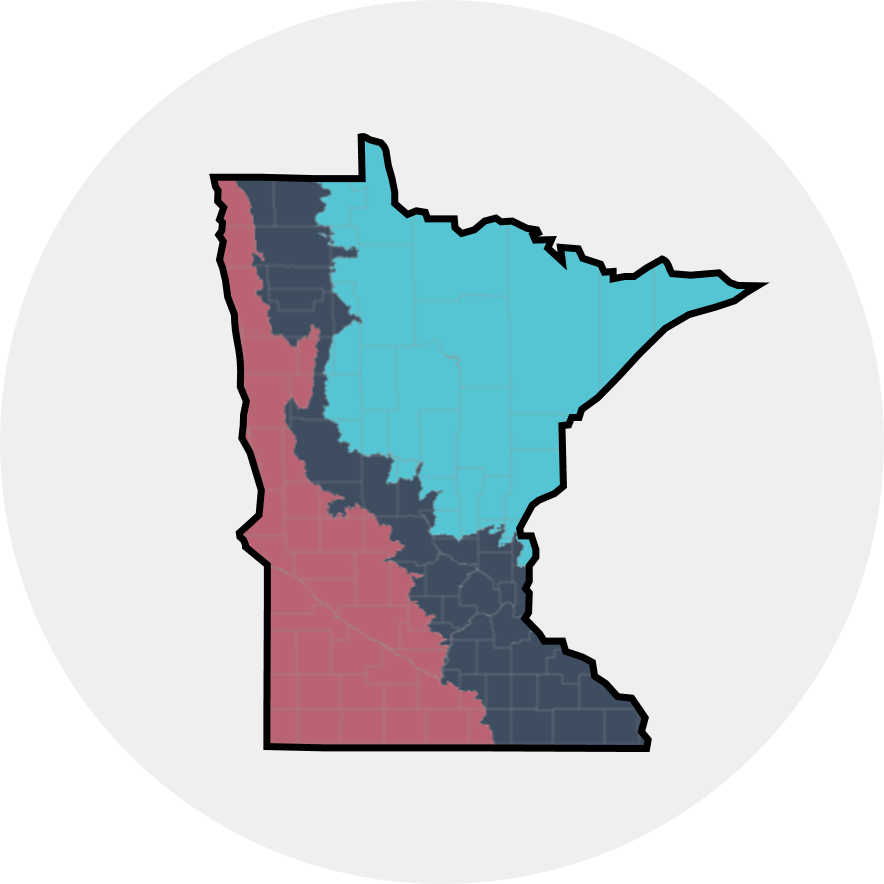More names for this plant
The Dakota and Anishinaabe were among the earliest people to name Minnesota’s plants and animals, as well as to understand them in relation to Minnesota’s climate and seasons. Those original names are still in use, and several are included on the Season Watch website. However, complete translations were not available.
Latin (or scientific name): Allium tricoccum
The scientific community has a convention of assigning agreed-upon Latin names to every kind of organism. Using scientific names helps people communicate confidently about the same organism and organize lifeforms based on how closely related they are.
French: Ail des bois
More common names: Ramp, small white leek, wild onion
Page contents
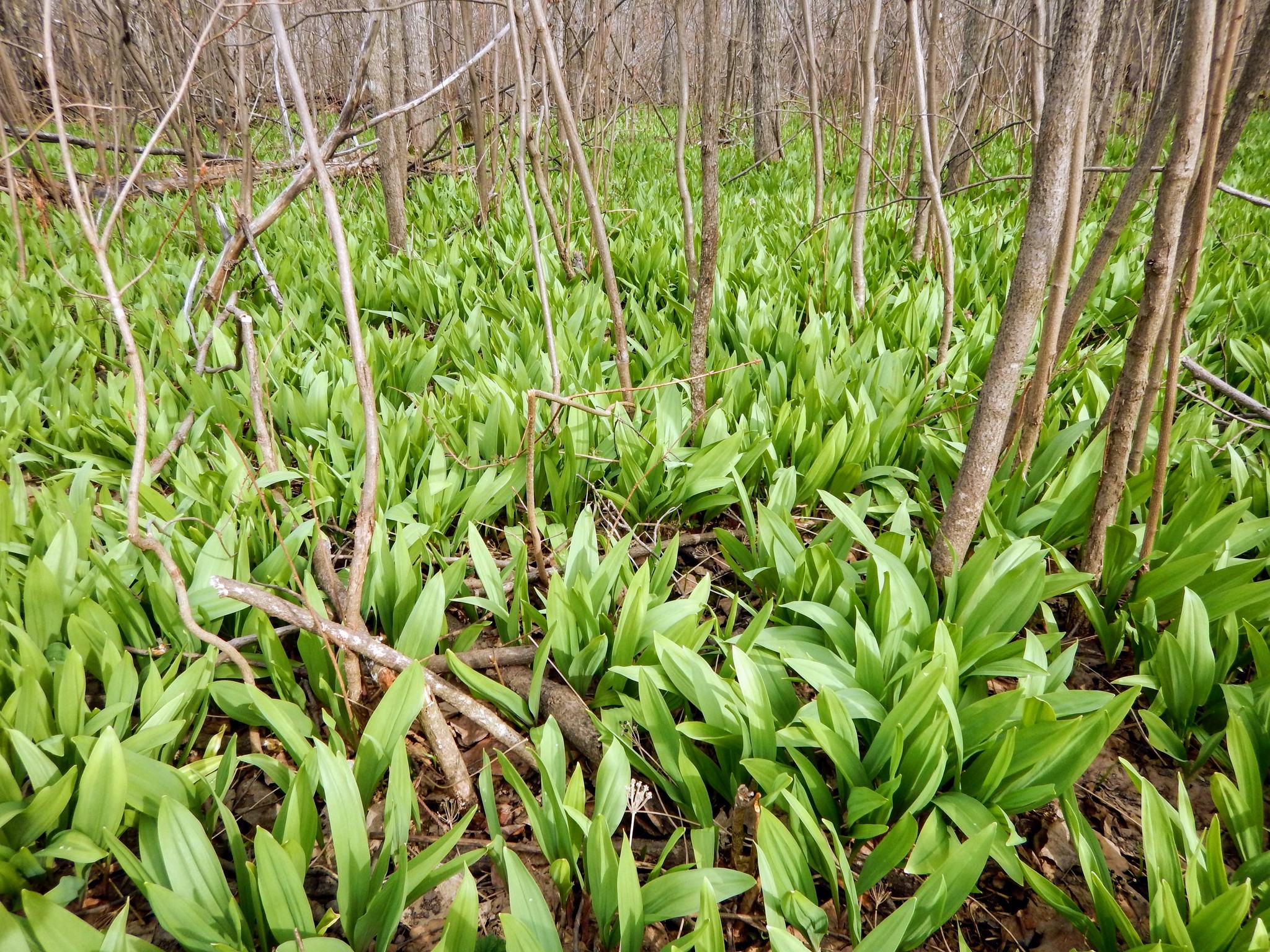
May 15, 2019, Lake County, Minnesota
Photo © Joe Walewski, some rights reserved (CC-BY-NC)
iNaturalist observation
About the wild leek
- This herbaceous perennial sends up two to three long, shiny leaves in early spring. A single cluster of small, white flowers emerges at the end of a long stalk a few weeks after the leaves have withered away.
- Wild leek can form dense understory stands in shady, woodland habitats. Near these wild leek clusters, note the onion-like smell in the air.
- Wild leek has a long life cycle like many spring ephemerals. It can take three to seven years for a plant to produce seed. The seeds can also take up to two years to germinate once they are dispersed. Because of this, wild leek is at risk from human disturbance and over-harvesting.
- Fun fact: The foliage and bulbs have a mild onion or garlic flavor and have been an important food source in many traditional Native American diets. Like many plants in the allium genus, it is also strongly anti-microbial and is used in traditional medicine.
Visual guide to phenology
Watch for the appearance of leaves, flowers, and fruits. Take notice of when flowers open and fruits ripen.
Note to observers
This page explains general clues to watch for when observing wild leek phenology. However, this page does not explain how to identify this plant or collect data in a standardized way.
- For help with identification, see Minnesota Wildflowers.
- For guidance on collecting data, see Nature’s Notebook.
More resources
Keep exploring Season Watch
Keep exploring Season Watch
Co-author: Audrey Negro, Minnesota Master Naturalist
